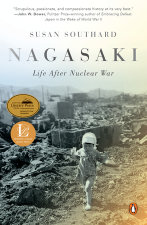Nagasaki
Life After Nuclear War

“[A] reminder of just how horrible nuclear weapons are.”—The Wall Street Journal
“A devastating read that highlights man’s capacity to wreak destruction, but in which one also catches a glimpse of all that is best about people.”—San Francisco Chronicle
“A poignant and complex picture of the second atomic bomb’s enduring physical and psychological tolls. Eyewitness accounts are visceral and haunting. . . . But the book’s biggest achievement is its treatment of the aftershocks in the decades since 1945.” —The New Yorker
The enduring impact of a nuclear bomb, told through the stories of those who survived: necessary reading as the threat of nuclear war emerges again.
On August 9, 1945, three days after the atomic bombing of…
Susan Southard holds an MFA in creative writing from Antioch University, Los Angeles, and was a nonfiction fellow at the Norman Mailer Center in Provincetown, Massachusetts. Southard’s work has appeared in the New York Times, the Los Angeles Times, Politico, and Lapham’s Quarterly. She has taught nonfiction classes at Arizona State University’s Piper Writers Studio and the University of Georgia, and directed creative writing programs for incarcerated youth and at a federal prison for women outside Phoenix. Southard is the founder and artistic director of Essential Theatre.
